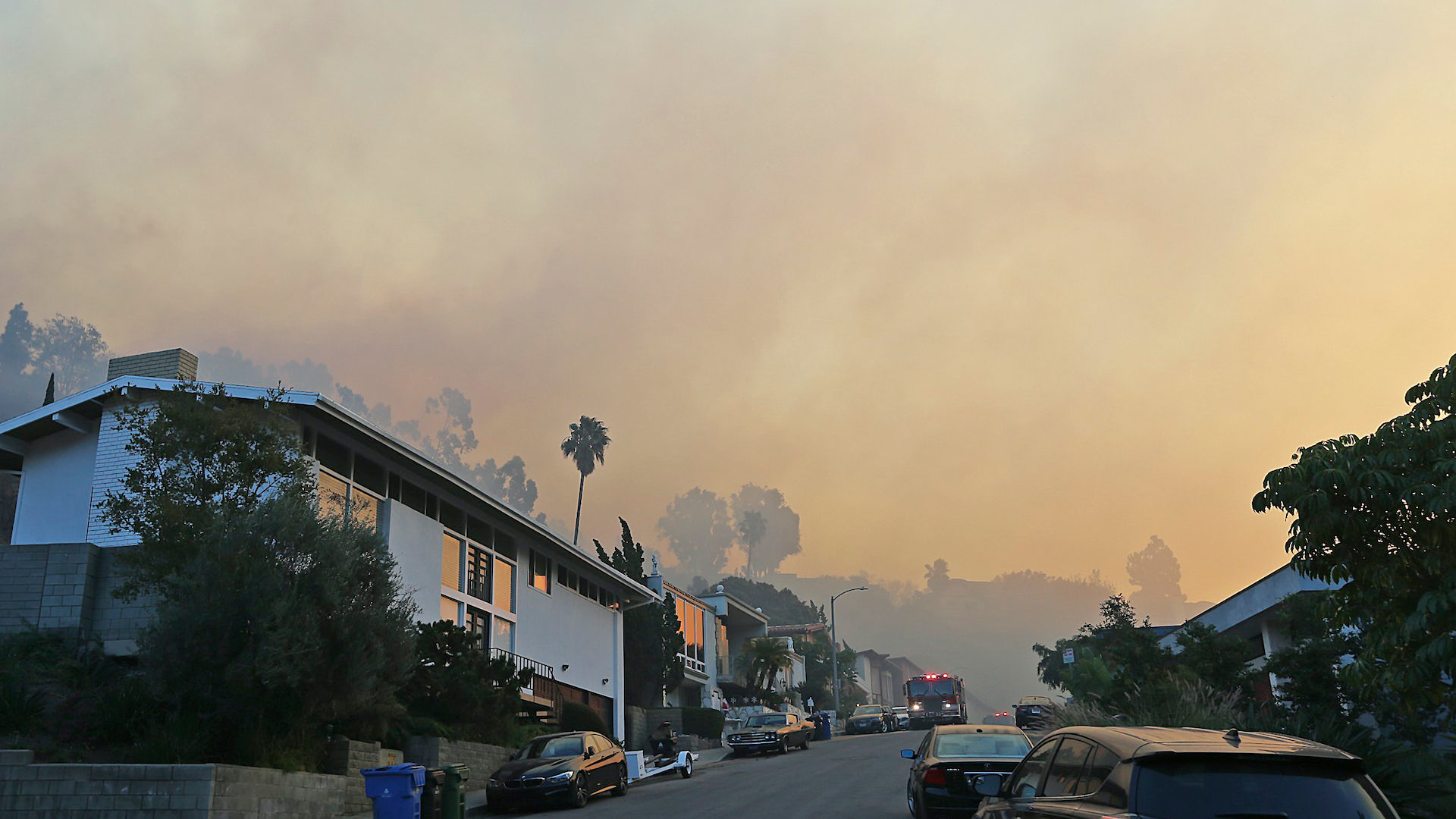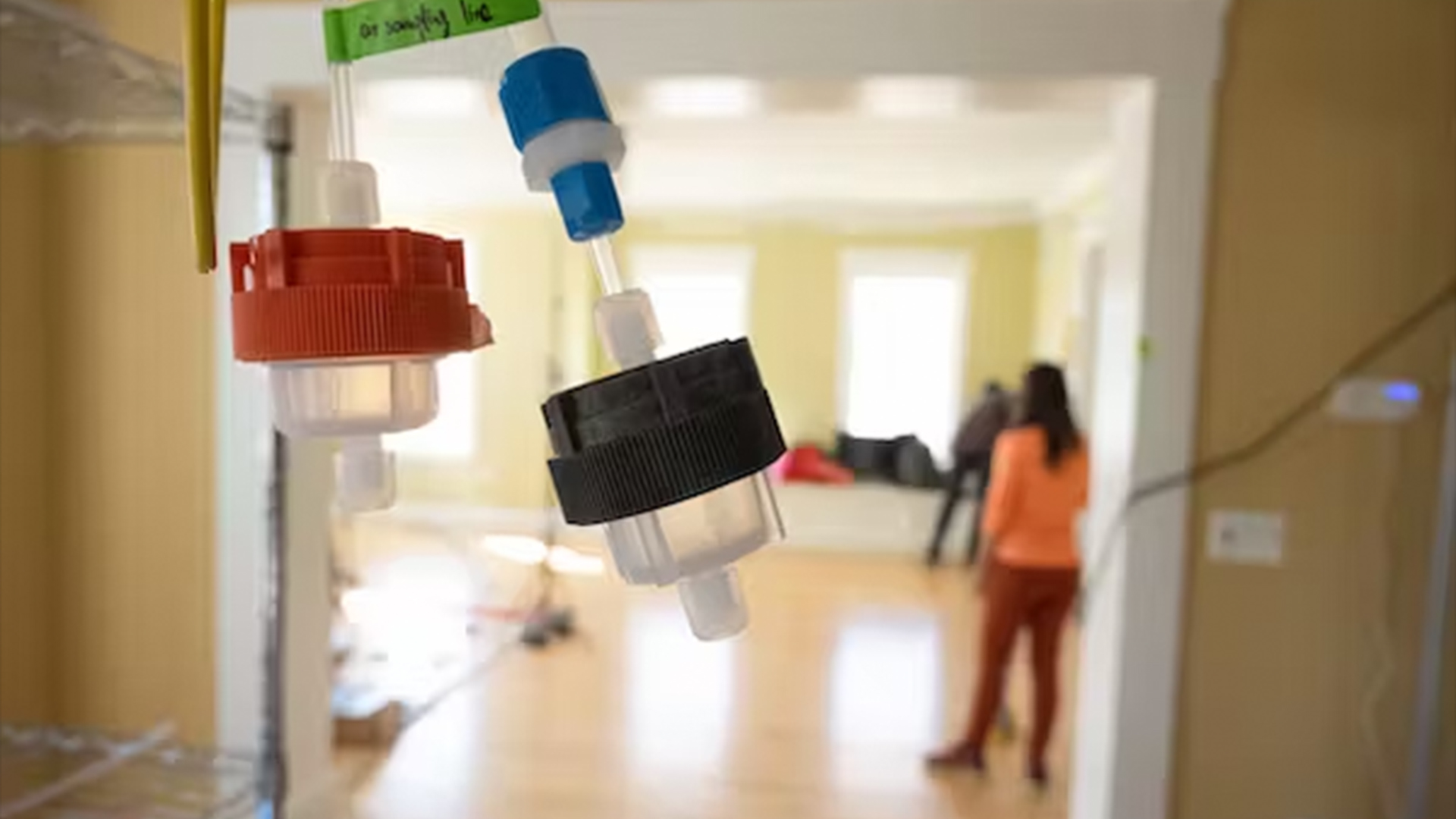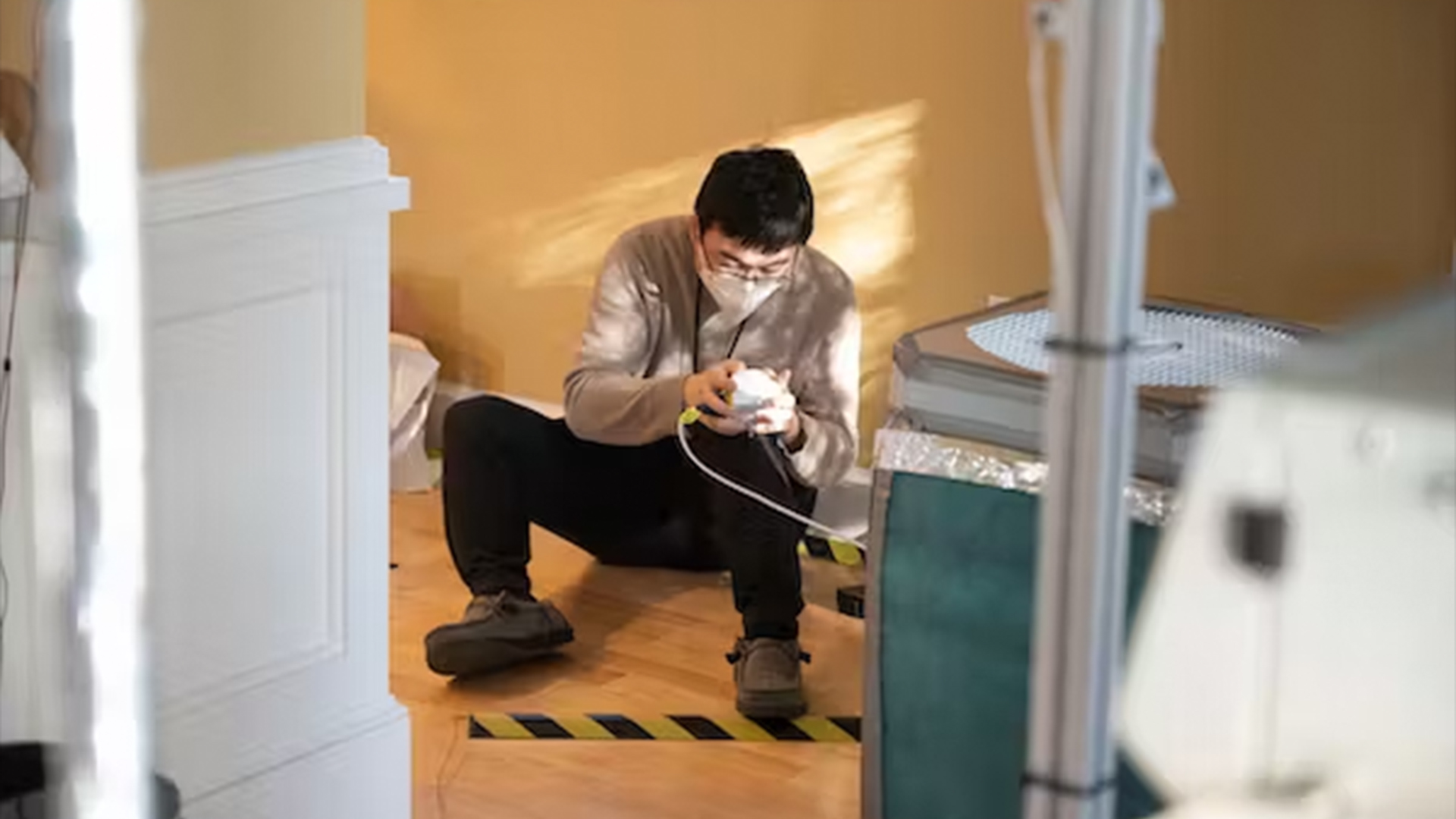Air purifiers aren't enough to rid homes of gases from wildfires. Here's what to do
Harmful gases from wildfire smoke can hang around in the walls and floors of your home for weeks. Thankfully, cleaning helps.

When wildfire smoke turns the air brown and hazy, you might think about heading indoors with the windows closed, running an air purifier or even wearing a mask. These are all good strategies to reduce exposure to the particles in wildfire smoke, but smoky air is also filled with potentially harmful gases. Those gases can get into buildings and remain in the walls and floors for weeks.
Getting rid of these gases isn't as simple as turning on an air purifier or opening a window on a clear day.
In a new study published in the journal Science Advances, colleagues and I tracked the life of these gases in a home exposed to wildfire smoke. We also found that the best way to get rid of the risk is among the simplest: start cleaning.
Related: How to get rid of smoke smells in your home
The challenge of smoke particles and gases
In December 2021, several of my friends and colleagues were affected by the Marshall Fire that burned about 1,000 homes in Boulder County, Colorado. The "lucky" ones, whose homes were still standing, asked me what they should do to clean their houses. I am an atmospheric and indoor chemist, so I started looking into the published research, but I found very few studies on what happens after a building is exposed to smoke.
What scientists did know was that smoke particles end up on indoor surfaces — floors, walls, ceilings. We knew that air filters could remove particles from the air. And colleagues and I were just beginning to understand that volatile organic compounds, which are traditionally thought to stay in the air, could actually stick to surfaces inside a home and build up reservoirs — invisible pools of organic molecules that can contribute to the air chemistry inside the house.
Volatile organic compounds, or VOCs, are compounds that easily become gases at room temperature. They include everything from limonene in lemons to benzene in gasoline. VOCs aren't always hazardous to human health, but many VOCs in smoke are. I started to wonder whether the VOCs in wildfire smoke could also stick to the surfaces of a house.
Get the world’s most fascinating discoveries delivered straight to your inbox.
Tracking lingering risks in a test house
I worked with researchers from across the U.S. and Canada to explore this problem during the Chemical Assessment of Surfaces and Air, or CASA, study in 2022. We built on HOMEChem, a previous study in which we looked at how cooking, cleaning and occupancy could change indoor air.
In CASA, we studied what happens when pollutants and chemicals get inside our homes — pesticides, smog and even wood smoke.
Using a cocktail smoker and wood chips, we created a surprisingly chemically accurate proxy for wildfire smoke and released small doses into a test house built by the National Institute of Standards and Technology (NIST). NIST's house allowed us to conduct controlled chemistry experiments in a real-world setting.
We even aged the smoke in a large bag with ozone to simulate what happens when smoke travels long distances, like the smoke from Canadian wildfires that moved into the U.S. in the summer of 2023. Smoke chemistry changes as it travels: Particles become more oxidized and brown, while VOCs break down and the smoke loses its distinctive smell.
Related: Canadian wildfire smoke detected thousands of miles away in Norway
How VOCs behave in your home
What we found in CASA was intriguing. While smoke particles quickly settled on indoor surfaces, VOCs were more insidious.
At first, the house took up these smoke VOCs — on floors, walls and building surfaces. But once the initial smoke cleared, the house would slowly release those VOCs back out over the next hours, days or even months, depending on the type of VOC.
This release is what we call a partitioning process: During the smoke event, individual VOC molecules in the air attach to indoor surfaces with weak chemical bonds. The process is called adsorption. As smoke clears and the air cleans out, the bonds can break, and molecules "desorb" back out into the air.
We could watch this partitioning happen in the air by measuring smoke VOC concentrations. On surfaces, we could measure the weight of smoke VOCs that deposited on very sensitive balances and then were slowly released.
Overall, we concluded that this surface reservoir allows smoke VOCs to linger indoors, meaning that people are exposed to them not just during the major smoke event but also long after.
Why worry about VOCs?
Smoke VOCs include well-known carcinogens, and high levels of exposure can induce respiratory and health problems.
While smoke VOC concentrations in our test house decreased with time, they remained persistently elevated above normal levels.
Given that VOC concentrations from other sources, such as cooking and cleaning, can already be high enough in homes to harm health, this additional long-term exposure source from smoke could be important. Further toxicology studies will be needed to determine the significance of its health effects.
Related: How is air quality measured at home?
How to clean up when smoke gets in
So, what can you do to remove these lingering smoke gases?
We found that air purifiers can remove only some of the VOCs that are in the air — they can't clean the VOCs on your floors or in your walls. They also work only when they’re running, and even then, air purifiers don't work particularly well to reduce VOCs.
Opening windows to ventilate will clean the air, if it isn't smoggy or smoky outside. But as soon as we closed windows and doors, smoke VOCs started to bleed off the surface reservoirs and into the air again, resulting in an elevated, near-constant concentration.
We realized that to permanently remove those smoke VOCs, we had to physically remove them from surfaces.
The good news is that cleaning surfaces by vacuuming, dusting and mopping with a commercial, nonbleach solution did the trick. While some remediation companies may do this surface cleaning for you after extreme exposures, surface cleaning after any smoke event — like Canadian wildfire smoke drifting into homes in 2023 — should effectively and permanently reduced smoke VOC levels indoors.
Of course, we could reach only a certain number of surfaces – it’s hard to vacuum the ceiling! That meant that surface cleaning improved but didn’t eliminate smoke VOC levels in the house. But our study at least provides a path forward for cleaning indoor spaces affected by air pollutants, whether from wildfires, chemical spills or other events.
With wildfires becoming more frequent, surface cleaning can be an easy, cheap and effective way to improve indoor air quality.
This edited article is republished from The Conversation under a Creative Commons license. Read the original article.

I am an atmospheric and indoor chemist, interested in how humans are changing the air we breathe — and our impacts on climate, ecosystems, and human health. My research group uses both laboratory and field studies in our research. I am a recipient of the 2013 Arnold and Mabel Beckman Young Investigator Award and the 2022 AGU Ascent Award.






